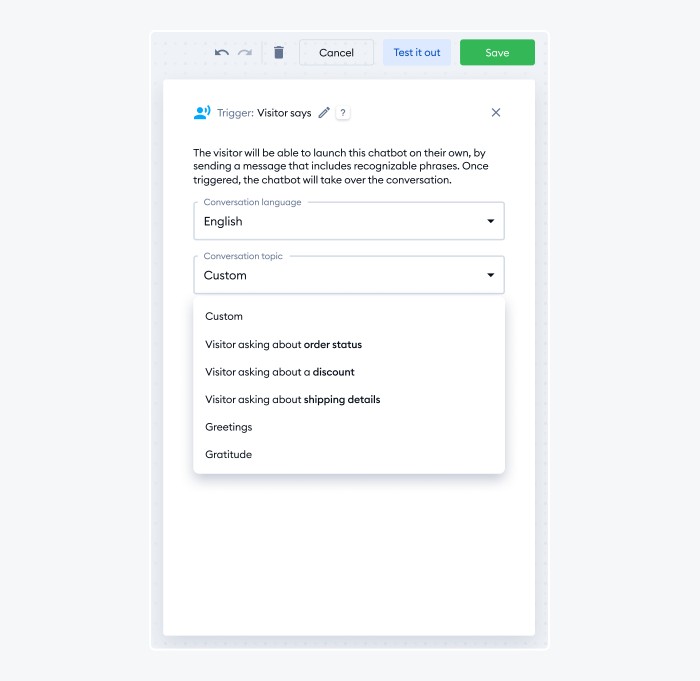Engaging website visitors and enhancing customer service often involves integrating chatbots. However, the effectiveness of a chatbot hinges on proper training. This guide provides a comprehensive approach to learning how to train a chatbot, focusing on utilizing platforms with built-in AI and NLP capabilities.
Understanding Chatbot Training Fundamentals
Before diving into the training process, it’s crucial to grasp fundamental concepts:
- Chatbot Training: The process of feeding data to a chatbot, enabling it to comprehend and respond accurately to user queries.
- Intent: The underlying purpose or goal behind a user’s question.
- Utterance: Different phrasing variations of the same question.
- Entity: Keywords that pinpoint the user’s intent.
- Trigger: The rule activating the chatbot’s response.
- Condition: Prerequisites for triggering the bot.
- Action: The chatbot’s response or task execution.
Steps to Effectively Train a Chatbot
Training a chatbot involves a structured approach encompassing these key steps:
1. Define Chatbot Use Cases
Data-driven decision-making is paramount. Analyze customer needs and business objectives to determine specific chatbot applications. Prioritize functionalities like order status checks and product searches, aligning with prevalent customer preferences. Leverage pre-trained AI engines offered by platforms like Tidio to expedite the training process.
2. Identify User Intent
Deciphering the visitor’s motive and desired outcome is crucial. Create precise chatbot intents catering to specific purposes. For instance, design separate bots for inquiries regarding opening hours, product details, or order updates. This focused approach enhances customer experience.
3. Analyze Conversation History
Utilize live chat transcripts to glean insights into common customer queries, repetitive tasks, and frequently asked questions. This analysis informs the development of automated responses for improved efficiency. Text analysis tools like Voyant can aid in identifying recurring themes and questions.
4. Generate Utterance Variations
Users phrase questions differently, even with the same intent. Train your chatbot to recognize various expressions for each intent, ensuring comprehensive understanding and accurate responses. This adaptability enhances user-friendliness and customer satisfaction.
5. Keyword Mapping to Intent
Identify keywords encapsulating the core information within user queries. These entities enable the chatbot to extract vital information. For example, in “What are your opening hours?”, “open” and “hours” are the keywords signifying the intent. Utilize NLP triggers within the chatbot platform, inputting relevant words and phrases to enhance keyword recognition.
6. Collaborative Training
Empower your customer support team to participate in chatbot training. Their frontline experience provides valuable insights into common customer issues and phrasing variations. Collaborative brainstorming and testing enhance bot accuracy and comprehensiveness.
7. Personality Infusion
Imbue your chatbot with a distinct personality reflecting your brand. Adopt a tone of voice consistent with your website and agents. Incorporate quick-witted replies to enhance engagement. Linking to knowledge base articles within FAQ chatbot responses provides comprehensive self-service options.
8. Media Enrichment
Integrate media elements like GIFs, images, and videos to enhance user interaction and create a more engaging experience. This fosters positive customer experiences, leading to increased loyalty and referrals.
9. Continuous Improvement
Chatbot training is an ongoing process. Regularly review chatbot analytics and performance data to identify areas for improvement. Adapt to emerging intents and refine responses based on user feedback.
Conclusion
Learning how to train a chatbot effectively involves understanding user intent, leveraging platform tools, and continuously refining its responses. By following these steps, you can create a chatbot that enhances user engagement, improves customer satisfaction, and streamlines your business operations. Remember that consistent refinement and adaptation are key to maintaining a chatbot’s effectiveness.
